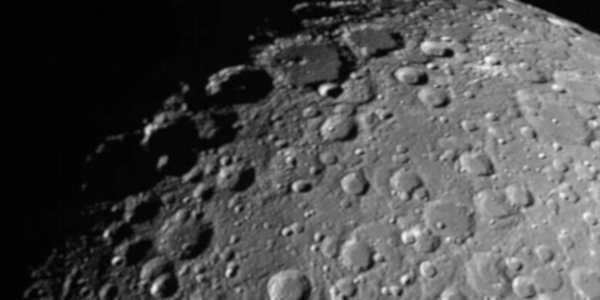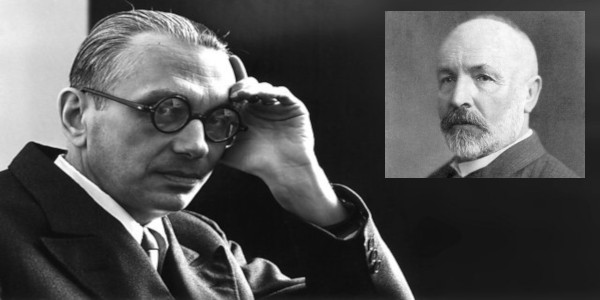Aristotles Wheel
Contagious confusion
self-inflicted problems
The image below illustrates a stylised wheel rolling across the screen. The wheel rotates one revolution and travels a distance equal to the outer circumference of the wheel.
The point 'A' lies on the inner circumference of the smaller circle and appears to travel the same distance in the same time as a point on the outer circumference.
How can that be?
It is assumed that the point 'A' represents the circumference of the inner circle, implying that having traveled the same horizontal distance as the larger outer circumference of the main wheel has created a paradox. Larger and smaller circumferences appear to be equal in length!
Please don't be taken in by this tomfoolery.
This "problem" was noticed over two thousand years ago and perplexed ancient Greeks. Sixteen hundred years later it annoyed the famous French mathematician Marin Mersenne and confused Galileo. More recently it has been a topic for argument on the Quora internet forum and is currently discussed on what claims to be the world's most extensive mathematics resource, Wolfram MathWorld.
I'm not saying they are all idiots... but you can easily be TO CLEVER FOR YOUR OWN GOOD.
The graphic above is an inaccurate illustration but a very accurate demonstration of the problem AS IT IS PERCEIVED.
This is a very important point to understand, as it has ramifications across multiple topics across this website. A "problem" has existed for over 2000 years and continues to trouble many because limited misinterpreted knowledge has distorted analysis, assumptions have led to a contagion of misunderstanding.
At first glance a seeming anomoly is perceived. The inner circle described by a point on an inner hub of a wheel appears to be unrolling around a circumference traversing exactly the same distance as the outer circumference of the wheel.
That should not be possible. To the ancient Greeks that contradicted their knowledge of geometry.
- It was perceived as a problem of geometry
- They tried to use their intellect to solve the problem
- They wrote it down in a book of mechanical/geometrical problems
- They couldn't see beyond the circumference of their circles
- People today describe the problem in the same way the Greeks did
- So they continue to fail to solve the conundrum
- NOT NOTICING THAT CIRCUMFERENCES OF CIRCLES ARE IRRELEVANT
- It refers to the graphic as a "wheel within a wheel", an unacceptable description. The wheel this alleged paradox refers to is the large outer circumference that provides the motive force, that is, the driving motion. The inner circle plays no role in causing the wheel to roll and is simply an artifact being carried by the driving wheel. It is misleading to discribe it as a wheel as it plays no part in generation of lateral motion.
- It then states that there is a one-to-one correspondence of points on the large and small wheels. ...A TOTAL IRREVELANCE.
- It then distinguishes between the surfaces the wheels may roll on. Pay attention to this.
There many so-called "explanations" of this alleged paradox, Many aknowledge that the wheel, by rotating to "unroll" the circumference of the outer edge of the main circle, moves laterally.
In fact it obviously moves laterally a distance exactly equal to the circumference of the main wheel. Although using the word 'obvious' in this context is a dangerous one.
The movement of the point A does NOT represent the unrolling of the inner circle circumference.
Look at the animation below.
The outer edge of the wheel has 20 segments. It's 20 segments represent its circumference, unrolled into a straight line, as seen on the lower line of 20 segments.
The inner circle consists of 10 segments, individualy equal in size to the outer segments.
The solid red bar illustrates the circumference of the inner circle.
It lies on the upper line of 20 segments alleged to represent the inner circle circumference. THIS ALLEGED MEASURE OF THE CIRCUMFERENCE OF THE INNER WHEEL IS CLEARLY NOTHING OF THE SORT.
TO REPEAT... The movement of the point A does NOT represent a measure of the inner circle circumference.
The point B DOES represent the unrolling of the outer circumference, the point A is transported laterally through a distance equal to the outer circumference of the main wheel, but the distance transported has no relationship to the circumference of the inner circle. This observation, that there is no relationship between the point A and the circumference of a circle it appears to follow simply destroys the claim that there is any semblance of a paradox here... but grasping the significance of this fact is clearly troublesome to many. People continually try to offer explanations for a paradox that does not exist. You cannot "explain" something that requires no explanation because there is nothing to explain.
What requires explanation is why we look at this "problem" and see a paradox. Why do we create a problem where a problem does not exist?
Below you see a young lady called Jade, claiming to solve this alleged paradox.
She does not suceed in this endevour, as she appears to followed the bizarre reasoning presented by professional mathematicians at Wolfram Mathworld.
The short video below considers a short comment by Jade, the presenter at Up and Atom, making curiously inacurate statements about the reasons for the alleged paradox.
The claim that intuition tells you that a smaller circle should have a smaller circumference is not strictly accurate but is acceptable given the target audience of the video. The term intuition could be better replaced by acknowledging that "smaller" circles have, by definition smaller circumferences than larger circles. But the claim that the smaller circle should have traveled a shorter distance is a bizarre notion that suggests she believes the circle is making independant progress rather than being carried by the main driving wheel. If a wheel were placed as an independant object on a cart there would be no question of the the circumference of that wheel having any rotational relationship to the drive wheels of that cart. Likewise, the afixing of a circular object to the side of the drive wheel of a cart simply secures it in place, and does not imply that any discernable rotational motion of the attached wheel has any relationship to the circmference of the driving wheels of the cart.
AS EXPLAINED ABOVE, THE LINE UNROLLING UNDER THE INNER CIRCLE IS NOT REPRESENTATIVE OF THE CIRCUMFERENCE OF THAT CIRCLE.
Below is the standard animation used on the Wolfram Mathsworld website.
This links to the page above https://mathworld.wolfram.com/AristotlesWheelParadox.html
Exactly what this explanation from the mathematical community says needs careful dissecting.
If you are looking at this on your mobile phone the image above may not be clear enough to read, so I will carefully explain what the text states.
It states-
"There is a 1:1 correspondence of points on the large circle with points on the small circle, so the wheel should travel the same distance regardless of whether it is rolled from left to right on the top straight line or the bottom one."
....THIS IS NONSENSE... and they know it, which is why the go on to describe it as a fallacy to assume a one-to-one correspondence means the 2 circles have the same length.
Even worse, the statement that "the wheel should travel the same distance regardless of whether it rolls on the upper or lower lines"is grossly misleading, the wheel will travel the same distance no matter what the circumference of any chosen inner or outer wheel, the distance travelled by all and every part of the wheel will always be the same. HOW FAR THAT DISTANCE IS DEPENDS ON THE DIAMETER OF THE DRIVING CIRCLE.
It follows this up with-
"This seems to imply that the two circumferences of different sized circles are equal. which is impossible".
Quite right... IT IS IMPOSSIBLE... but does not follow and is not implied from the previous bit of nonsense about one-to-one correspondence!
Most people look at the graphics illustrating this alleged paradox and recognise that a point on the outer rim of the larger wheel can be interpreted as marking out a straight line on the surface the wheel makes contact with... and that line represents the circumference of that wheel. Quite right, as long as it is made clear that the point marking the line is being pulled along the surface and is not represented by a point illustrated as circling the circumference, following a cycloid path, and therefore travelling much further than the circumferential distance.
They then misinterpret a point illustrated on the inner circle as behaving in an identical manner.
They assume a line drawn between the start point and end point marked on the inner circle represents its circumference... WHICH IT DOES NOT.
The understandable natural assumption that the two lines on which the circles are rolling both represent circumferences generates a seemingly paradoxical conclusion. This assumption relies on a simple visual illusion that is illustrated in the video below. The line drawn to illustrate the motion of the inner wheel simply represents the lateral motion of the whole wheel and has nothing whatsoever to do with the size or circumference of the inner circle.
The invoking of one-to-one correspondence as an alternative misinterpretation merely muddles the issue more so! The choice of the "points on a line" concept clearly indicates that the author of the Wolfram MathWorld explanation believes that the illusion of circular motion discussed in the video above is not an illusion and that the inner circles marked on the main drive wheel have some sort of reality.
The original Greek observations presumably came from real physical wheels rolling over a hard surface. The lateral distance traveled being determined by friction causing rolling rather than slippage, propelling the wheel a distance of one circumference in each revolution.
No one should have a problem appreciating that wheels of differing diameters will roll different distances in one revolution, but when the wheels are locked in a concentric mannner the 'driving force', the source controlling the lateral motion is critical.
Look at the video below.
The lower wheel on the animation is being driven by the central red circle. The red circle carries the larger yellow circle a distance of one circumference of the red wheel, a distance far less than the circumference of that same yellow circle, which nevertheless completes one full rotation.
Observing contagion.
The common understanding we have for the concept of a circumference leads in Aristotles Wheel Paradox to assumptions that create confusion. Our assumptions lead to wrong conclusions. Illustrations of the "problem" show the alleged confusion without an accurate description of what is actually occurring. They imply that the line over which the inner circle rolls represents a circumference when it does not. We may just be gullible to visual illusions.
But our knowledge of geometry acts like a contagious influence inducing misinterpretation that can be very difficult to see beyond.
THE ILLUSION OF ARISTOTLE'S WHEEL PARADOX
This video offers a simple animated guide to the illusion of circumferential motion in Aristotles Wheel Paradox.
If your knowledge encompasses the notion of one-to-one correspondence you may become either more deeply confused or, if you fall for a piece of mathematical mumbo-jumbo, become even more certain in your conviction that you understand something when you do not.
ARISTOTLES WHEEL "PARADOX" DEMONSTRATES HOW WE CAN ALL FOLLOW WHAT WE BELIEVE TO BE LOGICAL ASSUMPTIONS TO REACH WRONG CONCLUSIONS, ACCEPT WRONG IDEAS AND GENERALLY "MISS THE POINT".


